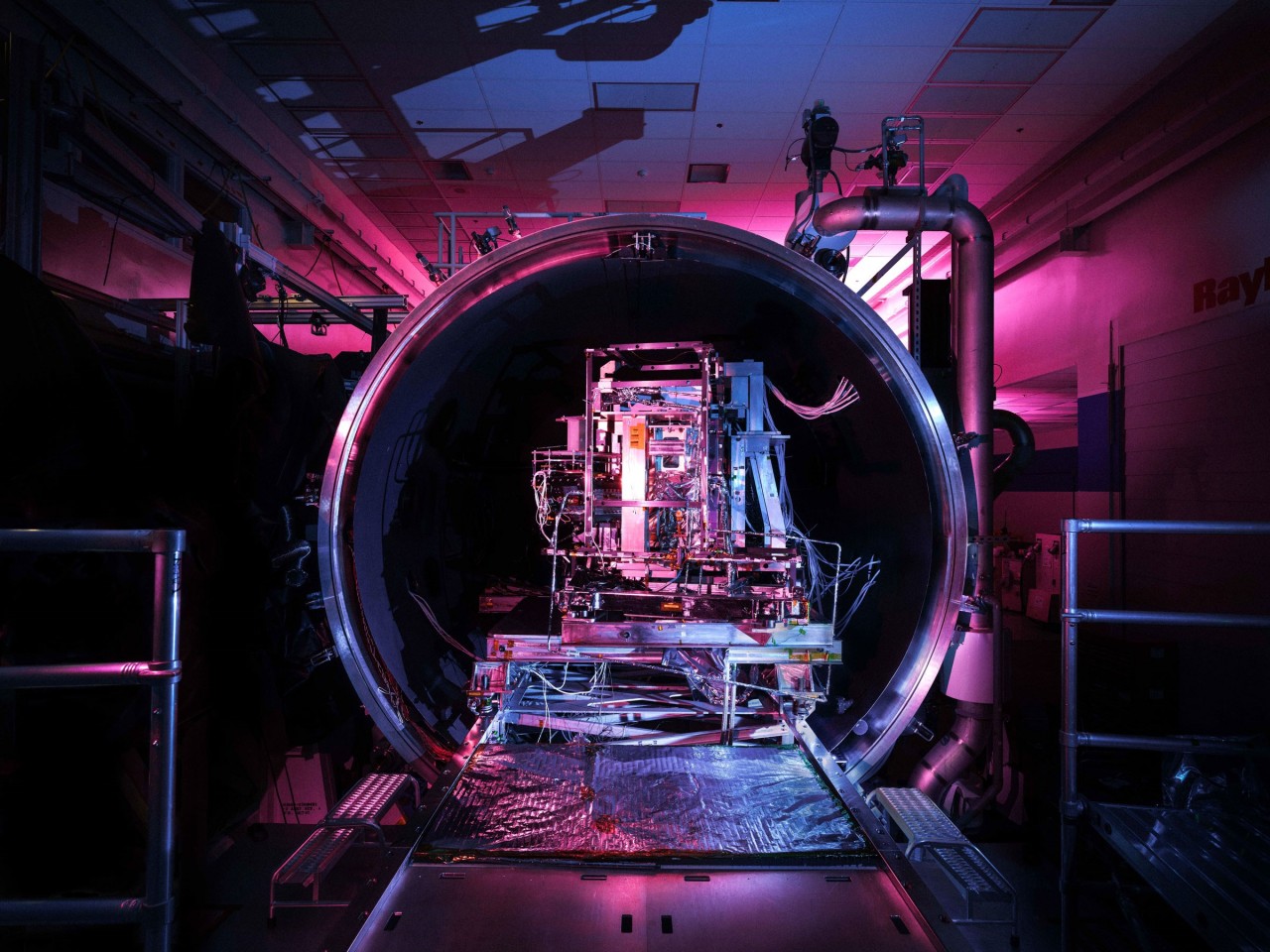
Prepping a satellite instrument for its journey into space can feel like getting ready to lift off yourself.
The sensors on board are vulnerable to the slightest speck of contamination—so to get close, you have to suit up. Required clean room attire includes a hair net, face mask, paper suit, disposable boots, and surgical gloves. No notebooks allowed—only paper that doesn’t release fluff if you tear it—and no clicky ballpoint pens. They spit out tiny balls of ink.In the wee hours of Saturday, a fastidiously clean scanning machine named VIIRS launched into orbit on a Delta II rocket from Vandenberg Air Force Base in California, just one instrument outfitting a next-generation weather satellite. The Visible Infrared Radiometer Suite is a washing machine-sized sensor, built to capture light and other waves that bounce off the surface of Earth. It collects those reflections, turning them into data about our planet, the oceans, land and vegetation cover, ice caps, volcanic plumes, and global temperatures—allowing accurate weather forecasts, wildfire and fishing fleet tracking, and climate monitoring.
If an Enterprise-like starship were above us now, scanning our Class M planet for life, this sophisticated camera-telescope hybrid is the instrument it’d be using. Instead, the lookie-loos are NASA and the National Oceanic and Atmospheric Administration.
A week ago I witnessed another VIIRS undergoing pre-launch testing at the headquarters of space and defense company, Raytheon, in Los Angeles. This was the identical sibling to the one that launched on the Joint Polar Satellite System-1 orbiter this morning, the third VIIRS instrument that Raytheon has built. (The first is in orbit, launched on the Suomi NPP satellite in 2011.) Ultimately, five of these sensors will orbit Earth—on four JPSS satellites and the S-NPP—spinning around the planet in vertical, polar orbits, scanning the surface below, and beaming…
The post This Next-Gen Satellite Will Scan for Storms Like Never Before appeared first on FeedBox.